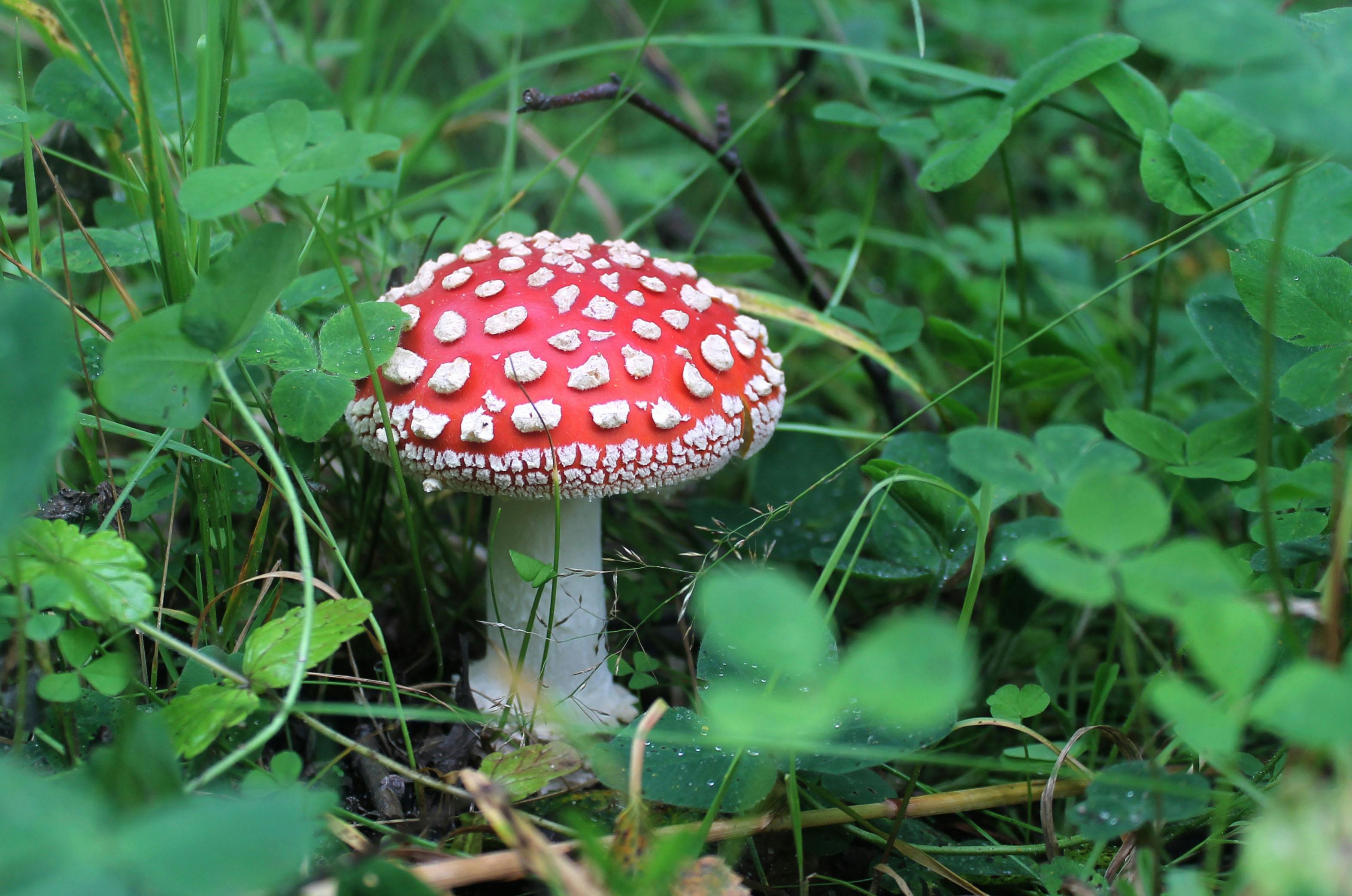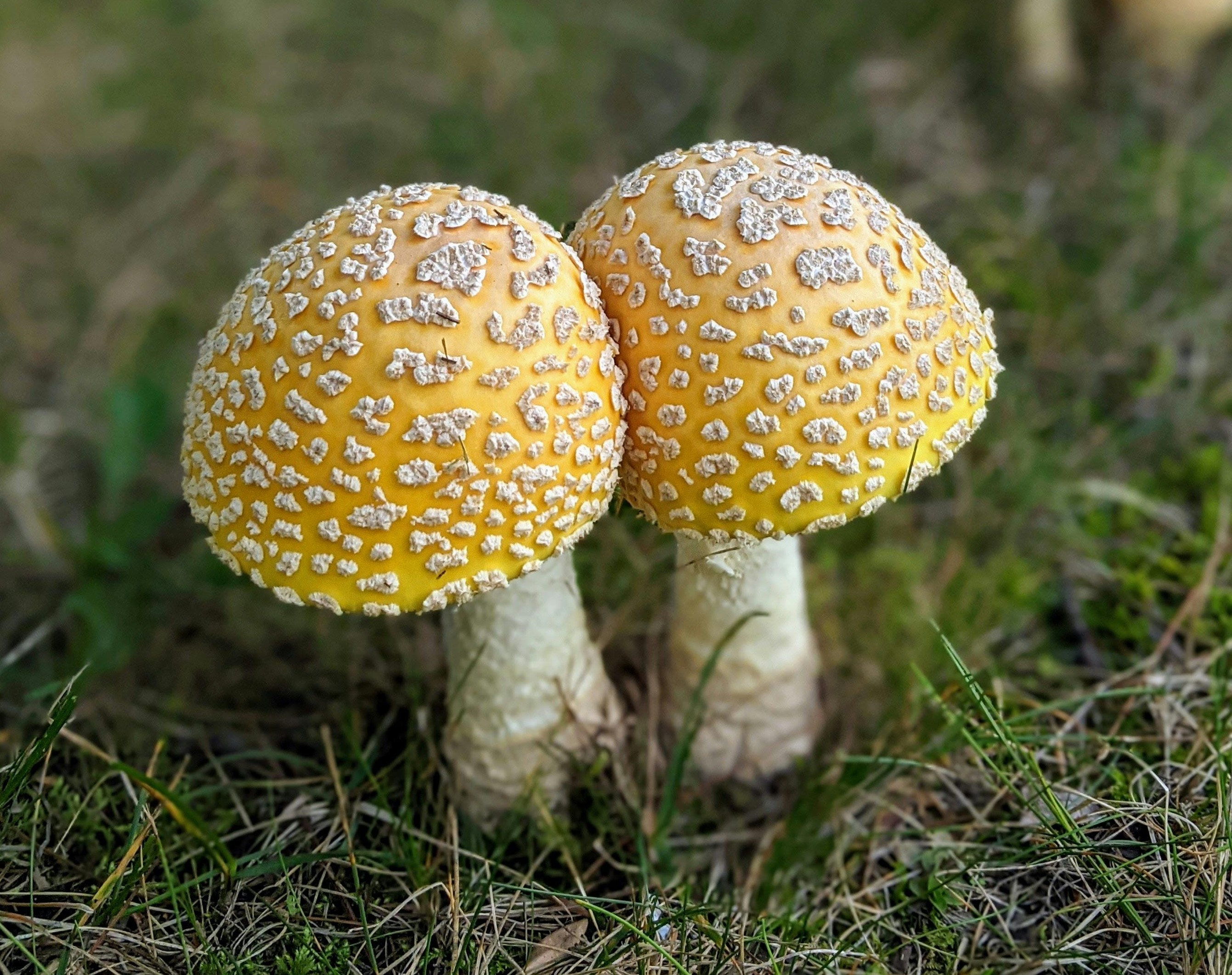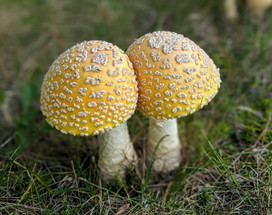Posted by Wild Forest Herbs on Feb 19th 2024
Amanita Muscaria: A global mushroom that's hard to grow
Introduction
Amanita muscaria, commonly known as the fly agaric mushroom, has captured the imagination of people around the world with its iconic red cap sprinkled with white spots. Other Wild Forest Herb blogs explore its medicinal potential, its core compounds of muscimol and ibotenic acid, and the process of decarboxylation. While Amanita muscaria has unique properties, a huge reason why it has such international acclaim is simply that unlike most mushrooms which are only found in a very limited region, Amanita muscaria are not only found around the world, they are found in the northern and southern hemispheres, in different climatic zones, and they even have different variations which mean they are not always red!
Let's start with a little bit of background on mushrooms in general. There are over 100,000 recognized species of fungi around the globe and many scientists believe the actual number could be much higher--reaching into the millions. To classify mushrooms, scientists use a system that includes order, family, genus and species. Amanita muscaria is a species within the Amanita genus (order Agaricales, family Amanitaceae). But while everyone knows the iconic red Amanita muscaria, there are actually different variations of Amanita muscaria and they can be yellow, orange, white, brown and even peach! While Wild Forest Herbs harvests and sells "Amanita Muscaria variation Flavivolvata" (which are indeed red). In future blogs we will discuss more about hunting for Amanitas, how to identify them, and the different variations in the United States.
In this blog, we cover the wide-ranging natural habitat of Amanita muscaria—and also explain why these mushrooms can only be found in the wild (so no point buying spores—you won’t be able to grow them!).

Amanita muscaria around the world
Amanita muscaria is a “mycorrhizal” mushroom. This means they have a symbiotic relationship with the roots of certain trees, particularly birch, pine, and spruce. It also means they are rarely found too far from one of these types of trees, so you won't find them in the middle of the prairies for example.
- Northern Hemisphere: Amanita muscaria is found across the far northern hemisphere. The vast spruce, pine, fir and mixed forests of North America, Europe, and Asia are prime habitats for Amanita muscaria. In North America, Amanita muscaria can be found from the northern parts of the Canada all the way to Alaska and the Arctic Circle. In Europe, they are most often found in countries with coniferous and mixed forests such as Lithuania, while in Asia, they extend from Siberia to Japan.
- Alpine and Subalpine Zones: Amanita muscaria also thrive in alpine and subalpine environments, usually wherever there is the right combination of tree species and climatic. The Alps in Europe, the Rocky Mountains in North America, and the Himalayas in Asia are among the high-altitude areas where these mushrooms can be spotted. Wild Forest Herbs usually gathers our amanitas in Colorado, but Alaska is another prime gathering spot. In Colorado, we've found the conditions need to be just right. Too much rain and cold and the Amanitas stay hidden. Too dry and hot and they can’t thrive. But afternoon rains followed with sunshine can create perfect picking grounds, usually starting in July and into August.
- Southern Hemisphere: While less common, Amanita muscaria can also be found in the southern hemisphere. In New Zealand and Australia, these mushrooms tend to grow in cooler regions, usually in areas with introduced pine trees. Their presence in the southern hemisphere is unexpected and adds to the global interest in this mushroom.
Why they must be gathered in the wild and can't be grown commercially.
Although they grow around the world naturally, cultivating Amanita muscaria at home or in a backyard is not really possible. Some vendors sell Amanita spores, but we avoid this as we know our customers will not be able to grow their own amanitas from these. Why not?
- Amanitas have a mycorrhizal (symbiotic) relationship with trees. Unlike many other edible or psychoactive mushrooms that can be cultivated commercially or even with kits at home, Amanita muscaria need specific trees to establish their mycorrhizal network. This makes it nearly impossible to create the complex ecological conditions required to grow your own Amanitas.
- Slow Growth and Lifecycle. Amanita muscaria has a relatively slow growth rate compared to some other cultivated mushrooms. Amanita’s complex lifecycle includes the formation of mycorrhizal network (the white, underground "roots" of the mushroom), fruiting bodies (the mushroom body that grows above ground) and releasing spores. Trying to create these conditions at home or commercially is almost impossible and requires a deep understanding of the mushroom's biology.
- Complicated Nutritional Needs. The nutritional needs of Amanita muscaria are not fully understood, making it even more difficult to grow them commercially. The complex dance between the mushroom and its mycorrhizal tree involves the exchange of nutrients (how amazing is that?!) and trying to replicate that at home would be exceptionally difficult.
Conclusion
Amanita muscaria continues to captivate and intrigue illustrators, photographers, enthusiasts, researchers, fairy tale writers and foragers alike. Its natural habitat spans across continents and hemispheres, and it can thrive in diverse ecosystems from boreal forests to alpine meadows. Despite how adaptable Amanita muscaria is in the wild, it's not a mushroom that can be grown commercially or at home. As we continue to learn about amazing world of mushrooms, the fly agaric mushroom stands out as one of the most iconic, varied and beautiful species in the fungal kingdom.


